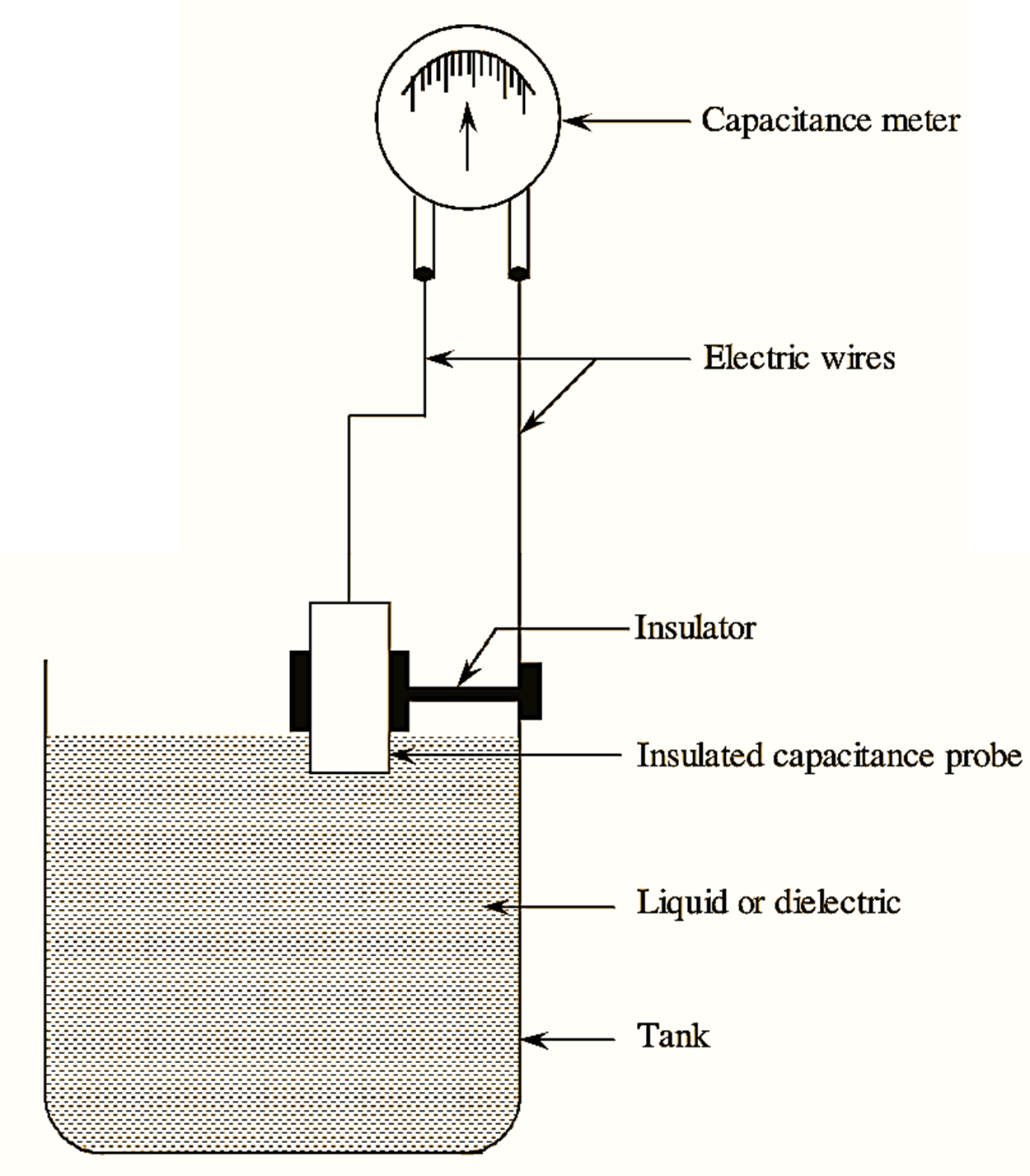
Figure 1: Capacitance Level Sensor.
Working Principle of Capacitance Level Sensor
The capacitance method of liquid level measurement or Capacitance Level Sensor operates on the principle of parallel plate capacitor, which can be stated as the capacitance of the parallel plate capacitor varies or changes if the area or dielectric constant of it changes.
Construction and Working of Capacitance Level Sensor
The capacitance probe or element is placed inside the tank (generally near to its wall) whose level of liquid is to be measured. The liquid (whose level is to be measured) placed inside the tank can be of two types one is conductive type and the other is nonconductive type. If the liquid is conductive in nature then the capacitance probe acts as one plate of the capacitor whereas the liquid acts as another plate of the capacitor. The dielectric material between these two plates is nothing but the insulation provided for the capacitance probe. In this case, the capacitance varies as the height of the liquid changes i.e., the principle of change in area of plates is used. Therefore when the height of the liquid increases the area between the plates decreases and output capacitance increases. Similarly when the height decreases the capacitance also decreases. In case the liquid whose level is to be measured is nonconductive in nature then the probe acts as one plate of the capacitor whereas the wall of the metal tank acts as another plate of the capacitor. In this case, the dielectric material is liquid. Here the capacitance varies as the dielectric material change (i.e., the principle of change in dielectric constant is used).
As shown in figure 1, the capacitance meter is connected to the capacitance probe and to the wall of the tank. The capacitance meter is calibrated interns of liquid level. If the level of the liquid inside the tank is low (or decreased) the capacitance of the capacitor decreases. The decreased capacitance value is displayed on the capacitance meter.
Similarly the capacitance increase with increase of liquid level and is indicated by the meter which intern indicates the level of the liquid inside the tank.
Advantages of Capacitance Level Sensor
- This method of level measurement is very sensitive.
- This method can be used for small systems.
- No problem of wear-tear since it does not contain any movable pans.
- It can be used with slurry fluids.
Disadvantages of Capacitance Level Sensor
- The performance will be affected by the change in temperature.
- The connection and mounting of metal tank with the meter should be proper, otherwise some errors may occur.